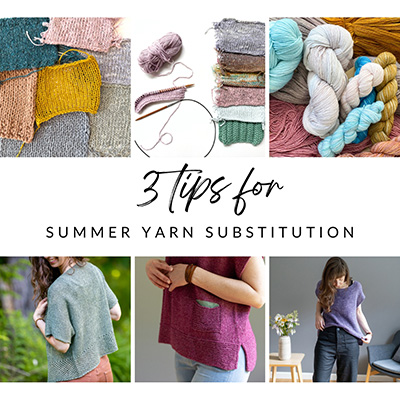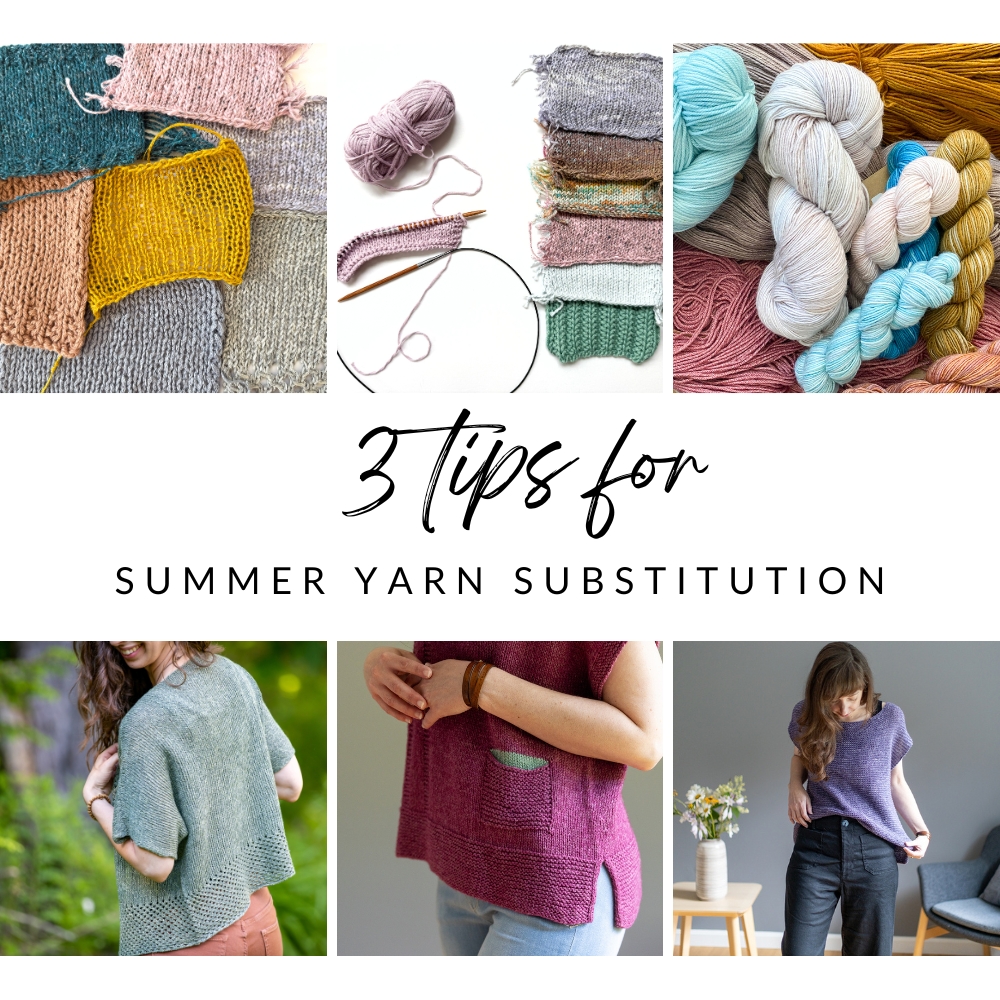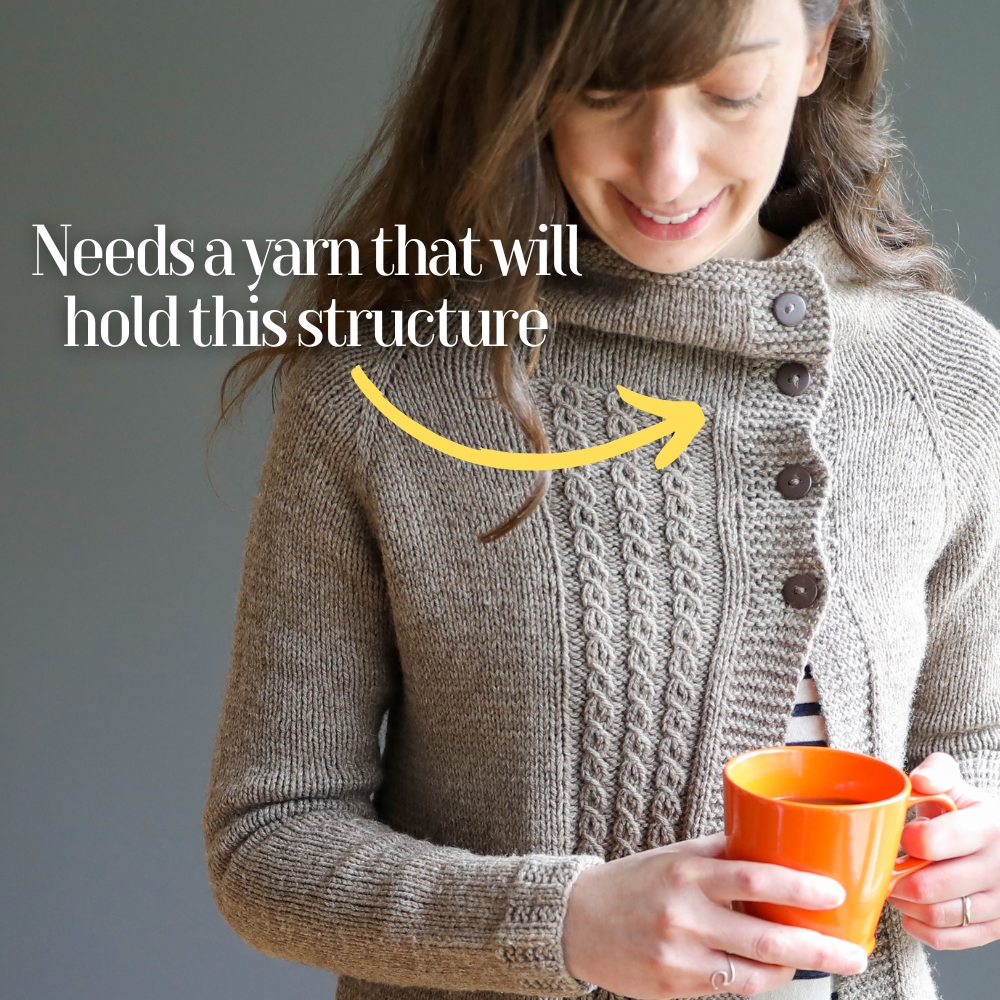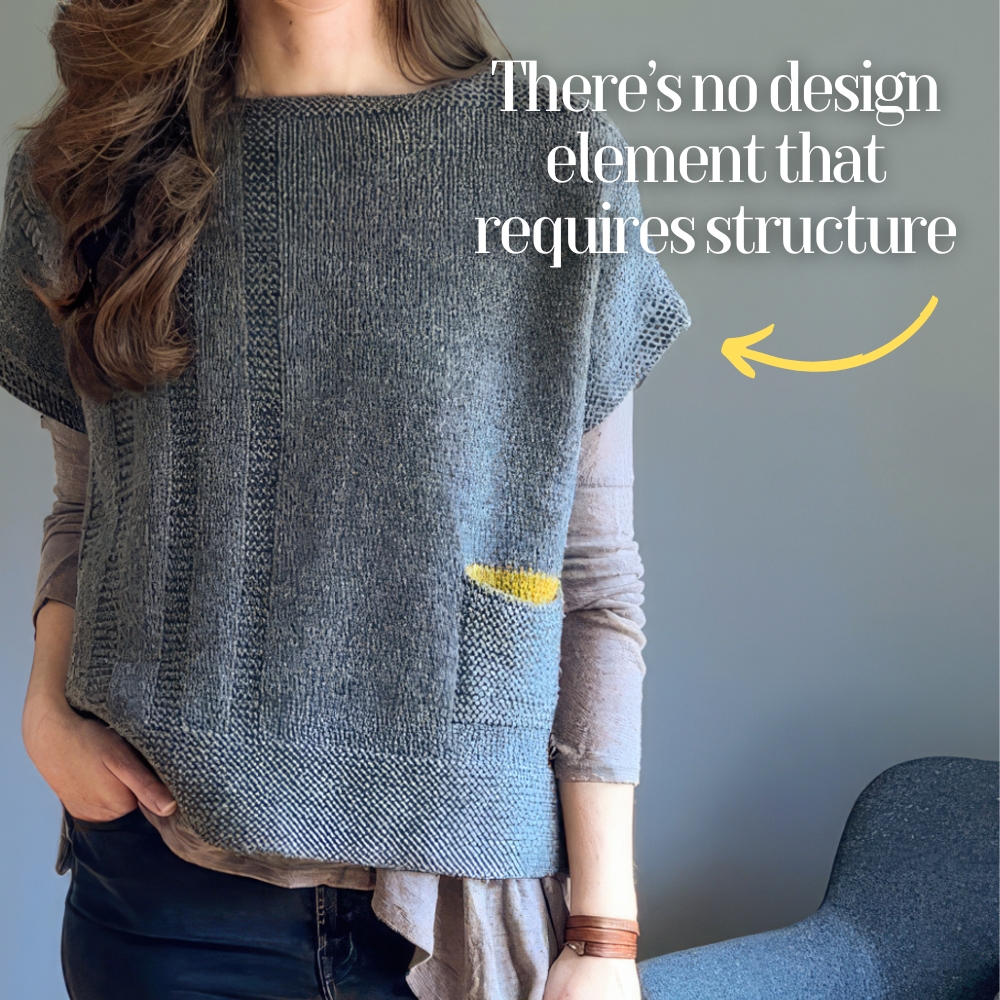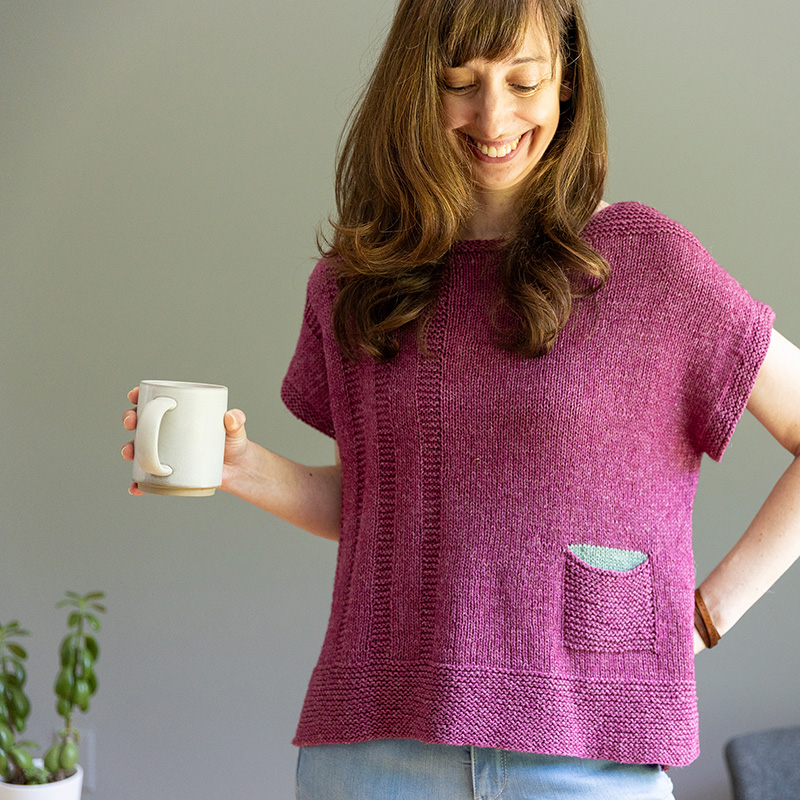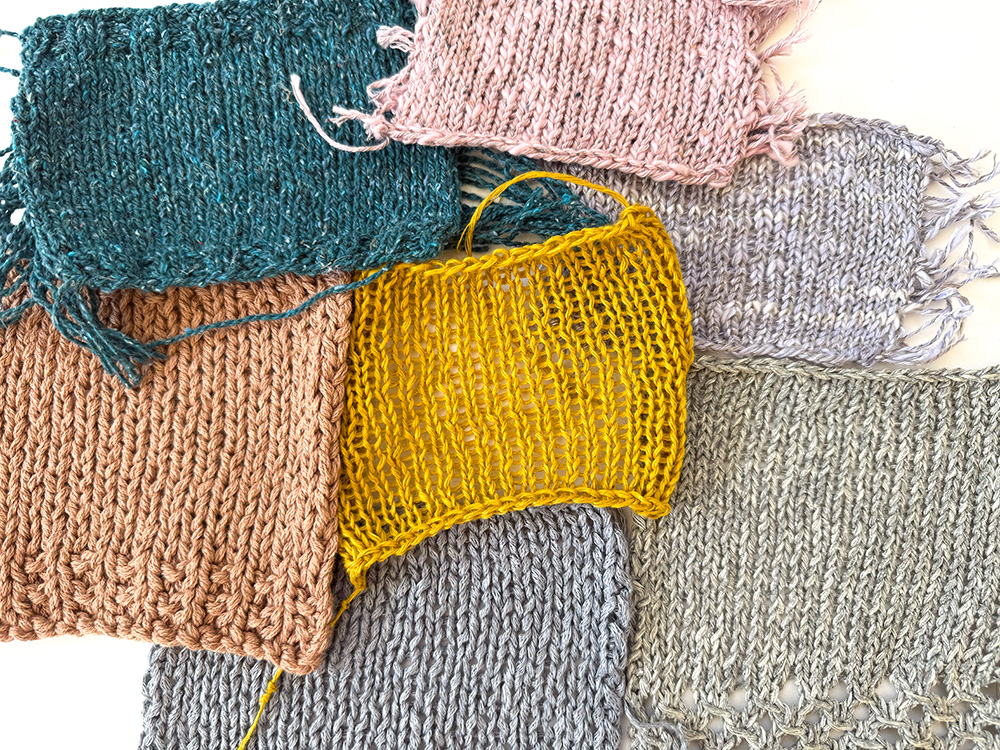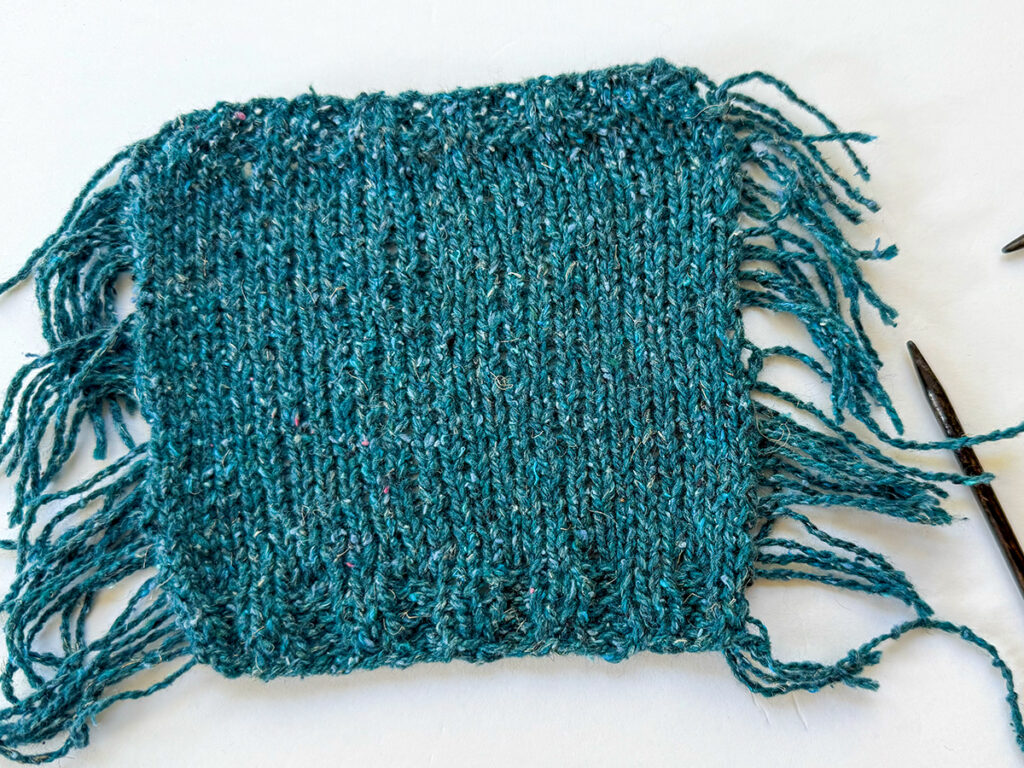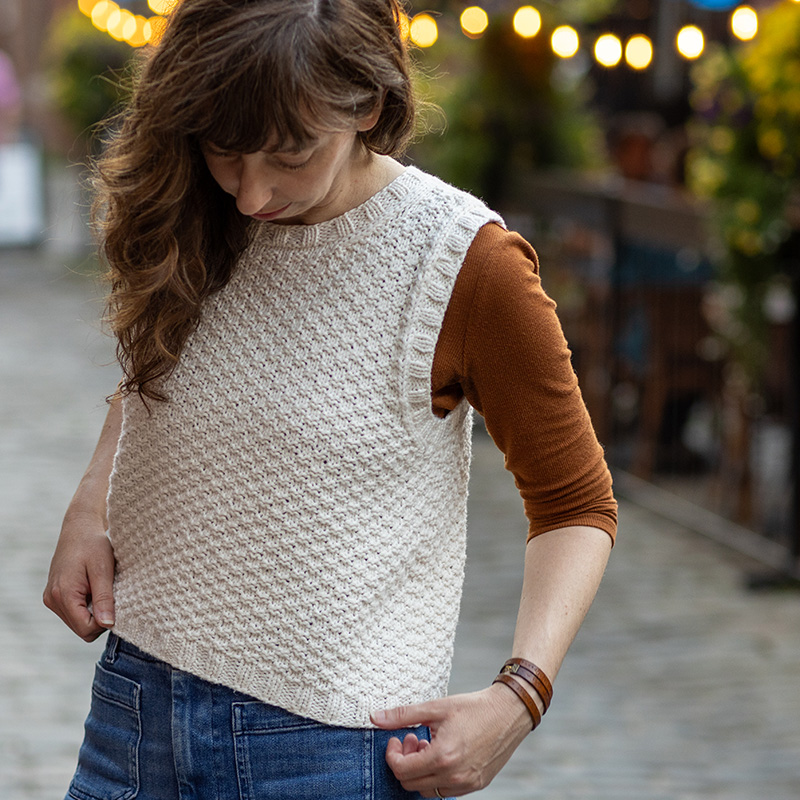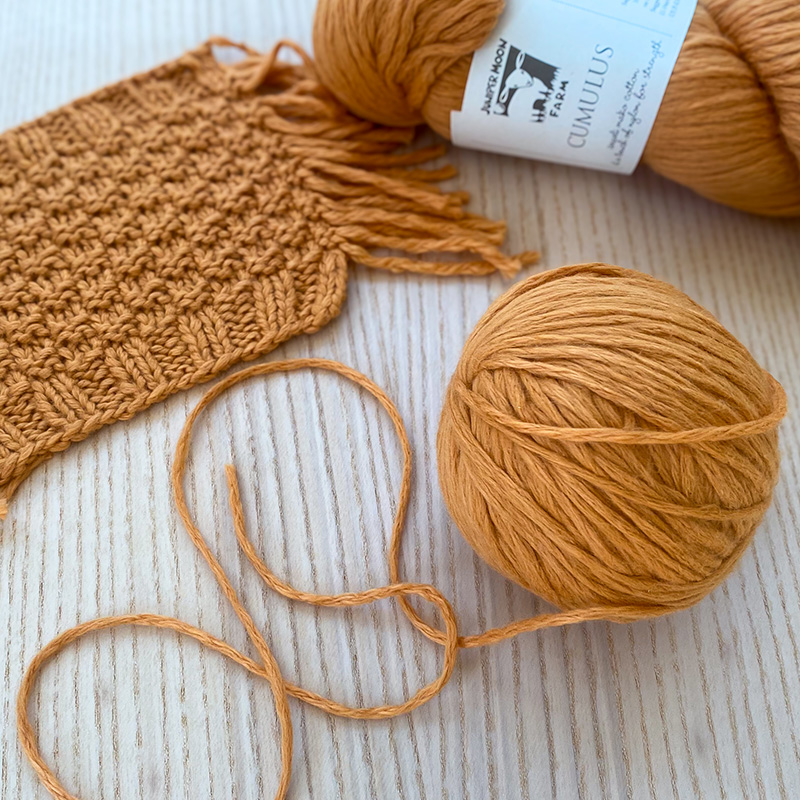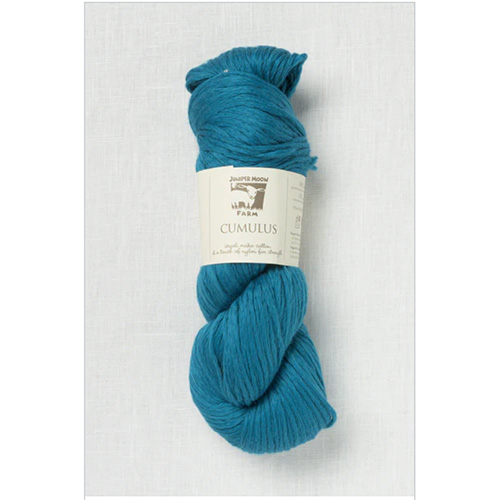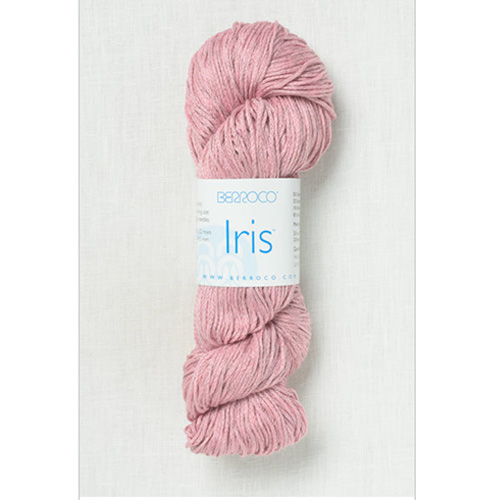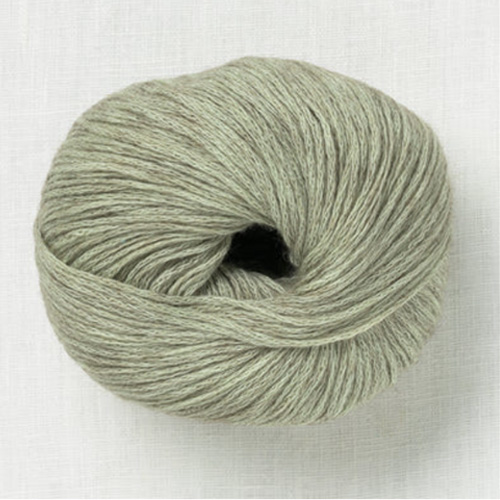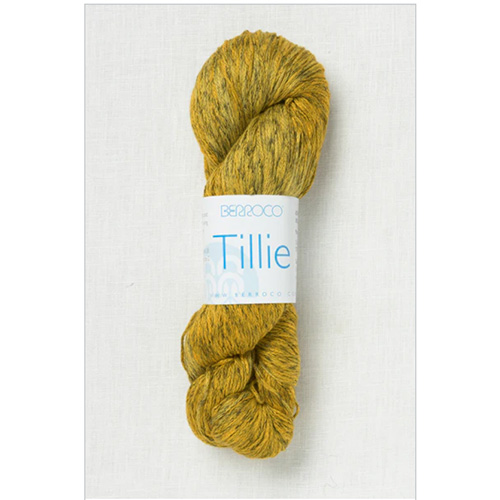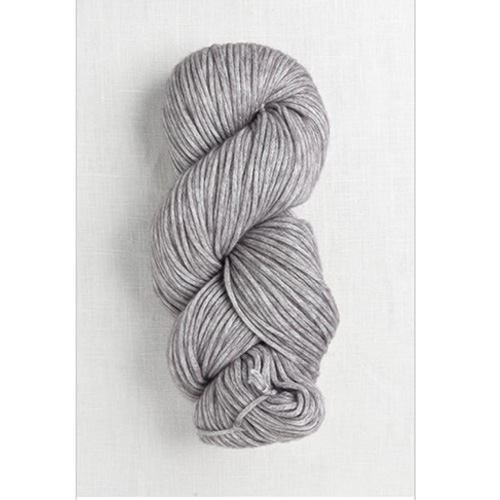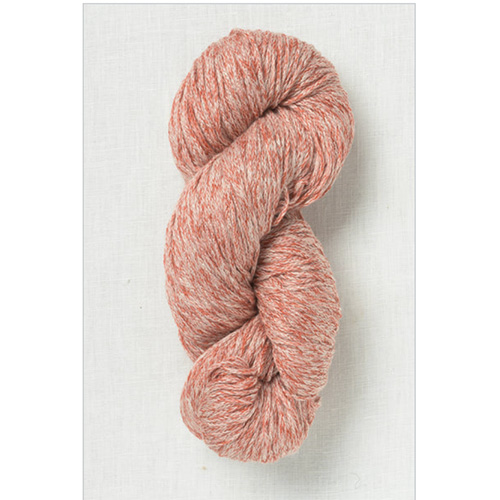Have you every had your eye on a particular pattern but it’s knit in a wool or other cold-weather-friendly yarn and you wonder if it would work well for a more warm-weather-friendly yarn? With the Spring season upon this, this topic may be on your mind right now!
After years of working in a yarn shop as well as my own experiences knitting and designing with LOTS of different fibers, I have a few tips about Summer yarn substitution that you may find helpful.
Tip #1: Choose a pattern where extra drape would not be a bad thing
This means designs that don’t require a lot of structure and that the lack of elasticity that comes with linen/cotton yarns won’t cause any issues.
Let me show you some examples of what I mean by this. I have 2 pattern examples below that were both originally knit up in 100% wool worsted-weight yarn. Let’s look at the first one – my Clouds in my Coffee cardigan:
As shown in the graphic above, this design features a mock turtleneck, asymmetrical fronts and a button band that is knit as you go in the garter stitch front trim. All three of these features require a fabric that has body to it and that will hold its shape. Otherwise, the neck will just collapse on itself and the buttonholes will stretch. And the asymmetrical construction of the Fronts won’t look and wear well as an open-style.
In contrast, below is my Alanis top that doesn’t have any elements to it that would require stability or structure. Having more drape would not be a bad thing at all – it could create a more flowy piece perfect for warmer weather.
And in fact, below is a sample of this exact design knit up in a warm-weather-friendly yarn, Luma by The Fibre Company:
Luma has some wool in it but it also has cotton, linen and silk. So the fabric created with this blend has more drape but that totally works well for this type of design.
Tip #2: Especially for linen yarns, choose a pattern with a looser fit and positive ease
Linen yarn especially is notorious for giving inconsistent gauge/fabric tension because of its lack of elasticity – it just doesn’t “give” when you’re working with it. So what this means is that often you will notice in a linen yarn gauge swatch that there are sections where your stitches may look bigger or smaller than other sections.
With this type of stitch inconsistency, you may find parts of your swatch are on gauge and other parts aren’t. So I like to pair my linen yarn with projects where exact sizing isn’t critical – pieces that are worn with more positive ease for a looser fit that has lots of drape and is flowy/swingy.
These types of patterns are very forgiving for fabrics like this and below are a few examples to demonstrate this:
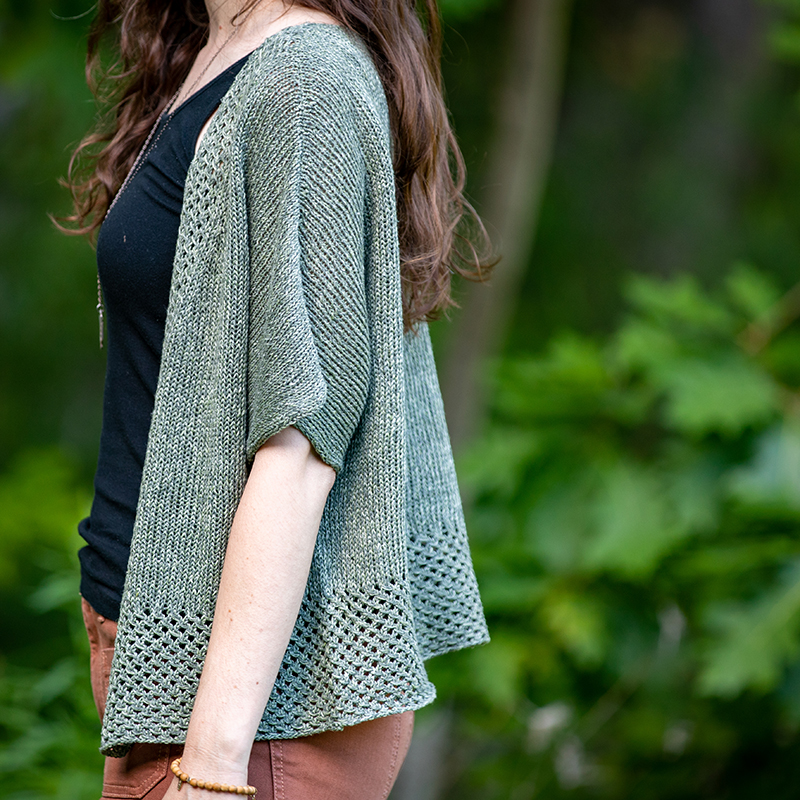

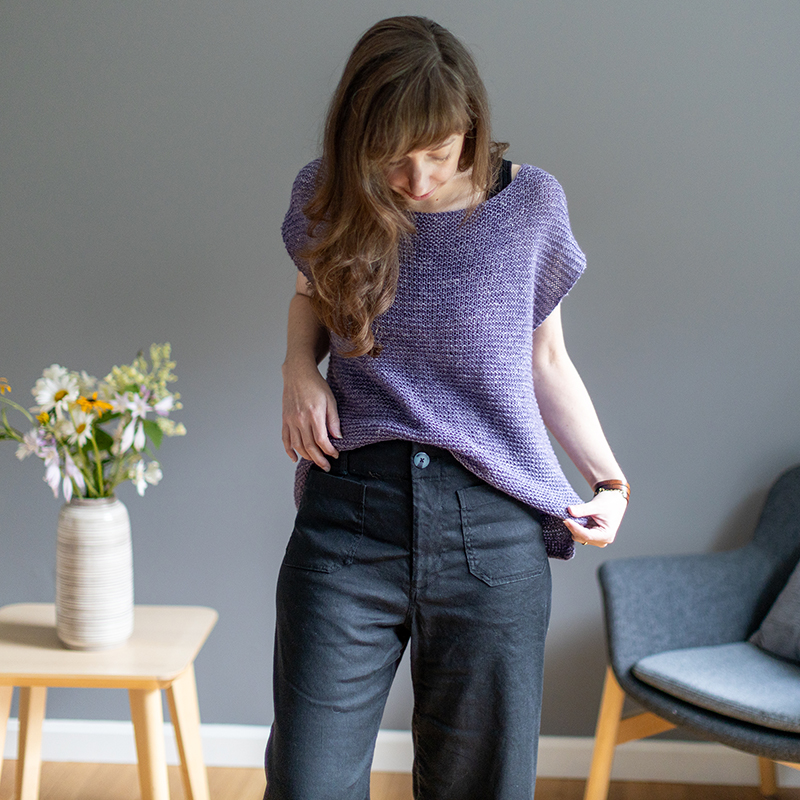
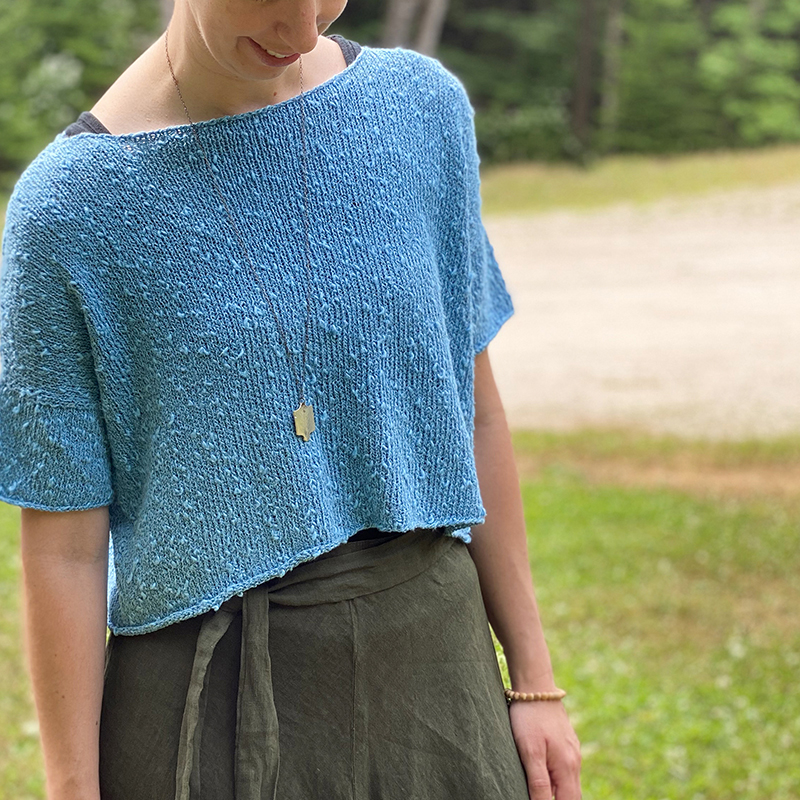
And this tip works for cotton yarns as well but for a different reason. Cotton stretches and has a lack of memory, and so I tend to stay away from form-fitting projects when working with cotton and choose instead projects where some garment-growth would ok (so a tee, layering vest, layering cardigan, etc). One thing to keep in mind with 100% cotton though is that because of this stretch, you may want to avoid making garments that are too long because they will feel heavy and may grow more with wear.
Tip #3: Look for cottons with a chainette construction for a lighter-weight option
Cotton is great for warm-weather climates because it’s breathable, moisture-wicking and pulls heat away from the body. But the downside to cotton in warm weather is that it can also feel heavy. However, in recent years there are more and more cotton yarns available in a chainette-type construction where it’s also blended with nylon, wool or some other kind of elastic fiber.
Why doe this work well? Because these yarns have a chained construction that have a hollow, airy core and this is what provides a light-as-air feel.
My Wharf Street Vest uses a cotton/nylon blend that’s considered a chainette-type construction and although it’s a worsted-weight, it is SO light and airy. The yarn is Cumulus by Juniper Moon Farm.
What are some examples of cotton chainette yarns these days? Here are a few ideas (photo credit and links to Wool & Company yarn shop):
You can learn more about chainette-construction yarns in this blog post I wrote a couple of years ago.
I hope you found these 3 tips helpful as you start to dream of your Spring and Summer knits this season! If you have any questions about how to pair a Summer yarn with any of my designs, feel free to reach out!

